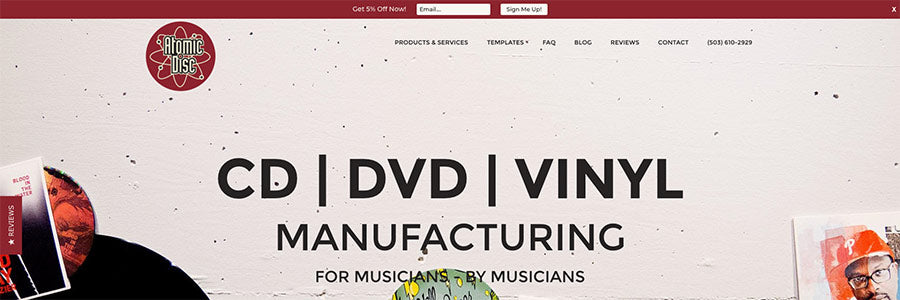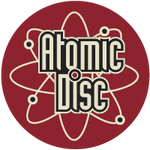It's fairly common knowledge today that email is among the most effective and affordable marketing tools. So let's not waste any time with a bunch of statistics to prove what you already know.
Instead, let's dive right into how to get started with email marketing.
The first thing you need is a list of email addresses to send your clever emails to. It might seem a bit daunting if you have no email list, but fear not - here are some simple tips on how to build an email list from scratch.
Get your fans' email addresses at your shows
The easiest place to get people to sign up for your email list is at your shows. Just think about it; they just watched your spectacular performance and can't wait to get more of you.
Whether it's on paper or on an electronic device such as a tablet, always bring an email sign up sheet to your shows.
If you use paper, have a clipboard that ensures a flat surface for your fans to write on. The line spacing should be large enough to make writing simple.
If you have a tablet available, make a single page sign up form on your website and have this page open so it's big, uncluttered and easy to read.
The less information you ask for, the more likely it is that people will jot it down. Name, email and zip code might be acceptable. If you don't tour beyond your state borders, you don't need to ask for a zip code.
Announce your email list from stage
Between songs you have a golden opportunity to direct your audience's attention to your email list. Tell them where they can find your sign up form and why they should give you their email address.
Some people need a little more persuading, which is why you should think about the following: What's in it for them...?
What will they get when they sign up to your email list? A free sticker? Access to an exclusive video? A free song download? You need to have something unique to offer that they can only get by signing up to your email list.
You should also reassure them that they can always change their mind later. You will not spam their inbox and every email will give them an opportunity to unsubscribe if they wish.
Walk around with your email list right after you get off stage
Strike when the iron is hot! If you jump right off stage with a clipboard or tablet in hand, you will leave a lasting impression on your audience.
Walk the crowd and politely, yet insistently ask for their email address. It really helps to have a handful of stickers with you. You get their email address, they get a free sticker. It's a win-win.
Make your email list visible at your merch table
When you set up your merch table, make sure you have a very prominent and easily accessible spot for your email list.
If people buy something, ask them to sign your email list. Give them a free sticker if they do. You can even use your email list as a sales tool. Give them a discount if they give you their email address.
On your website
Your website should make it obvious that you would like people to sign up to your email list. Keep in mind that the less information people have to give you, the more likely they are to comply. Email address is really all you need to start. If you ask for first name, you'll have the opportunity to personalize your emails later, but it will decrease your sign up rate. If you're a touring band and intend to send out show announcements and reminders, a zip code is useful, but that might be pushing it on an online sign up form.
With today's web technology there are multiple ways of displaying a sign up form. You don't have to limit it to one place on your website.
1. Sign up form in your header
Putting your sign up form in your homepage header is a great idea. It will be the first thing people see when they visit your website.
 2. Floating bar
2. Floating bar
A floating bar is a static bar at the top or bottom of your page. It stays in place as your visitor scrolls. This is a great way to keep your sign up form visible at all times.
 3. Sidebar
3. Sidebar
If your website has a sidebar layout, this would be an excellent place to put a sign up form. Make it hard to miss by putting it at the very top of your sidebar.
4. Scroll-box or slide-in
A scroll-box or slide-in is similar to a popup, but it appears only when the user starts scrolling. It can appear from the bottom or slide in from the side.
5. Blog page and blog posts
If you actively blog, this is the page where your fans are likely to spend some time. Put a sign up form at the top and bottom if you wish.
At the end of every blog post is another place where you should add a sign up form. If people make it to the end of your blog post, they have most likely enjoyed reading it and are very prone to want more by signing up to your newsletter.
6. Timed lightbox
If you wish to use a popup, timing it to appear after your visitor has had a chance to look around might be less intrusive than bombarding them with it as soon as your site loads.
7. Exit-intent popup
An exit-intent popup is coded to detect when your visitor is about to leave your site and appears at that critical moment. You'd be surprised at how many people are willing to quickly put down their email address before they move on with their life.
8. Footer
The footer of your site should have a sign up form as this is an expected place to find it. If people have scrolled all the way to the bottom of your site, they are most likely enjoying what they saw and highly likely to be up for giving you their email address.
 9. Splash page
9. Splash page
If you're bold, you could make your homepage a splash page with only a sign up form. Once a visitor adds their email address and hits "subscribe" they get redirected to your actual homepage.
Or you could have two options: a sign up form and an "Enter Site" button.
To make it a little more user friendly you could add your main navigation to the bottom of the page.
I would use this method with caution, as it might turn off quite a few visitors that simply want to check out your website for the first time, but are not ready to commit to give you their email address.

Your online store
When making a purchase through the ecommerce section of your website, customers are required to add an email address. According to anti spam laws you are not allowed to send them any marketing content unless you give them an option to opt out. During the checkout you should have a simple radio button that is set to "Accepts Marketing" as default, and gives your customer the option to deselect.
Anyone who did not opt out of marketing can be added to your email list and receive your awesome newsletters and gig announcements.
Social media
Most social media channels will give you the option to have a sign up form or button on your artist page. This is a must!
You should also make regular posts on your social media channels where you entice people to sign up to your email list by offering exclusive content like a song download, a video, an interview, a drawing for backstage access, discount code for your online store, behind the scenes photos, blog posts, you name it...
Online ads
Online ads might sound a little scary... Why should you pay to get someone's email address? This is where you have to consider the "lifetime value" of a potential fan.
As a working musician, you make your money by selling your music, concert tickets and merchandise. In order to sell your music, concert tickets and merchandise, you have to reach your potential customers and convince them to buy something.
"Out of all available marketing channels, email is the most affordable and effective."
If you are not convinced of the truthfulness of that statement, here are the statistics to back it up:
- Email marketing ROI (return on investment): 124%
- Social media ads ROI: 30%
- Direct mail ROI: 29%
- Paid search ROI: 23%
- Online display ads ROI: 16%
So... it might be worth paying a few pennies for the email address of a potential fan...
Don't waste your time and money with Google Adwords Search ads, though. People don't search for new music by googling it.
What is worth your time and money, however, is Facebook Boosts, and Facebook and Google Remarketing ads.
When you've created a Facebook post designed to get an email address, you can pay to get it into more people's Facebook feed. This is a simple and affordable way to reach more people.
You can customize who sees your boosted post by a large range of criteria like age, gender, location and interests; music genre, interest in an artist that sounds like you, etc. Or you could choose to show it to people who already like your Facebook page and their friends. (Whom are likely to have similar taste in music.) You only pay when someone clicks on your boosted post and you can set your budget and time it will run.
Remarketing ads are those that suddenly show up in your Facebook feed and on random sites right after you visited a company's website. Both Facebook and Google offer these. It's simple to set up by adding a small snippet of code to your website. You only pay when someone clicks on your ad, and you have full control over your budget and timeframe.
In conclusion
It's never too late to get started with email marketing. It's free. It's simple. And totally worth it!
If you have tips or stories of your own regarding list building and email marketing, we would love to hear about it in the comments below.
Also worth reading: 5 Types of Emails to Send Your Fans
Photo credit: Miranda Vettrus, Josh Richey Photos, Rex Larkman, Surrealsister Photography, Jam Now.

 2. Floating bar
2. Floating bar 3. Sidebar
3. Sidebar 9. Splash page
9. Splash page